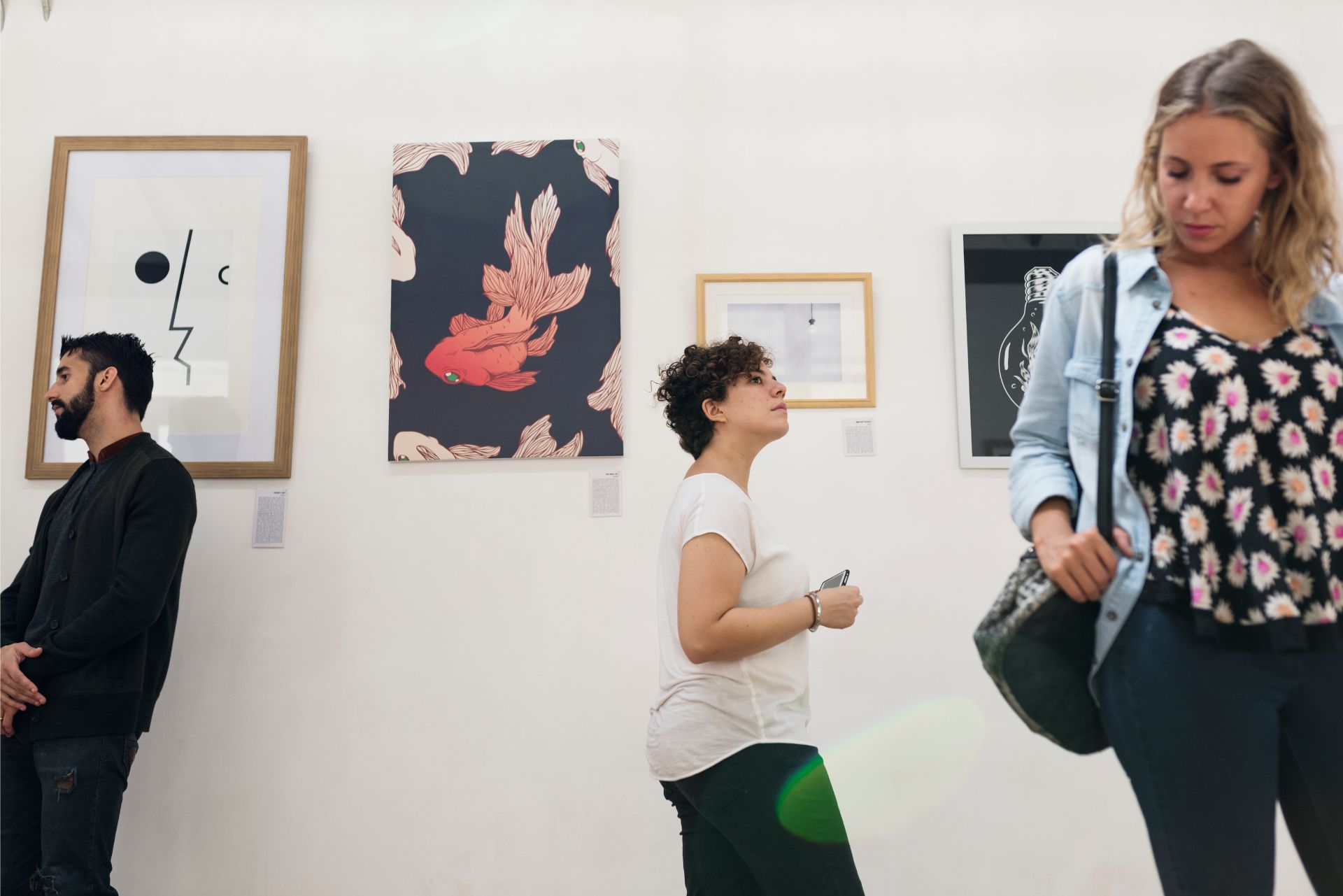Top 3 Recommended Policies

New York City is renowned for its rich cultural heritage, housing some of the most prestigious museums and art galleries in the world. From the Metropolitan Museum of Art to the Museum of Modern Art, these institutions not only showcase extraordinary collections but also face unique risks that necessitate specialized insurance coverage. Understanding the various aspects of insurance for museums and art galleries is crucial for their protection and sustainability. This article delves into the essential elements of insurance tailored for these cultural institutions.
Understanding the Importance of Insurance for Museums and Art Galleries
Museums and art galleries are not merely places of display; they are custodians of history, culture, and creativity. The artworks and artifacts housed within these institutions are often irreplaceable and can carry immense financial and sentimental value. Therefore, having the right insurance coverage is vital for protecting these assets.
Risk Exposure in Cultural Institutions
The risks faced by museums and galleries are diverse and multifaceted. They range from theft and vandalism to damage caused by natural disasters, fire, or water leaks. Additionally, the transportation of artworks for exhibitions or loans presents its own set of challenges. Each of these risks can lead to significant financial losses if not adequately insured.
Moreover, museums and galleries often host events, workshops, and educational programs, which can expose them to liability claims. If a visitor is injured on the premises or if an artwork is damaged during an event, the financial repercussions can be severe. Thus, comprehensive insurance coverage is essential to mitigate these risks. The potential for reputational damage should also be considered; a high-profile incident can deter future visitors and donors, impacting the institution's long-term viability.
Types of Insurance Coverage
Insurance for museums and art galleries can be categorized into several types, each addressing specific needs and risks. Understanding these types is crucial for selecting the right coverage.
- Property Insurance: This covers the physical assets of the museum or gallery, including the building, artworks, and exhibits. It protects against damage or loss due to fire, theft, vandalism, and other perils.
- Liability Insurance: This type of insurance protects against claims arising from injuries or damages that occur on the premises. It is essential for safeguarding against lawsuits related to accidents or negligence.
- Fine Art Insurance: Specifically designed for artworks, this insurance covers loss or damage to individual pieces or collections. It often includes coverage for transportation and exhibition risks.
In addition to these fundamental types, there are specialized policies tailored to the unique needs of cultural institutions. For instance, Business Interruption Insurance can be invaluable; it provides financial support in the event that operations are halted due to a covered loss, allowing museums and galleries to maintain their staff and ongoing programs during recovery. Furthermore, Cyber Liability Insurance is becoming increasingly important as institutions digitize their collections and manage online ticket sales, protecting against data breaches and cyberattacks that could compromise sensitive information.
Another critical aspect of insurance for museums and galleries is the need for regular appraisals of their collections. As the value of artworks can fluctuate over time due to market trends, having an up-to-date valuation ensures that institutions are adequately covered in the event of a loss. Engaging with professional appraisers who specialize in fine art can provide museums with the necessary insights to adjust their coverage as needed, ensuring that they are not underinsured or overpaying for unnecessary coverage.

Key Considerations When Choosing Insurance
Selecting the right insurance policy for a museum or art gallery involves careful consideration of various factors. Each institution has unique needs based on its size, location, and the nature of its collection.
Assessing the Collection's Value
One of the first steps in obtaining insurance is to assess the value of the collection. This involves conducting a thorough inventory and appraisal of the artworks and artifacts. Professional appraisers can provide accurate valuations, which are crucial for determining the appropriate coverage limits.
It is essential to regularly update these valuations, as the market value of artworks can fluctuate significantly over time. Museums and galleries should also keep detailed records of provenance and condition reports to support claims in the event of loss or damage. Furthermore, institutions may consider engaging in periodic re-evaluations, especially when acquiring new pieces or when significant changes in the art market occur. This proactive approach not only ensures that the collection is adequately insured but also provides valuable insights into the collection's growth and significance within the art community.
Understanding Policy Exclusions
Insurance policies often contain exclusions that can limit coverage. It is vital for museum and gallery administrators to read the fine print and understand what is and isn’t covered. Common exclusions may include damage from certain natural disasters, wear and tear, or specific types of theft.
By understanding these exclusions, institutions can take proactive measures to mitigate risks that may not be covered under their policy. For instance, investing in security systems or disaster preparedness plans can help reduce the likelihood of incidents that could lead to claims. Additionally, museums should consider conducting regular risk assessments to identify potential vulnerabilities, such as inadequate climate control for sensitive artworks or insufficient fire safety measures. By addressing these risks head-on, institutions can not only protect their valuable collections but also enhance their reputation as responsible stewards of cultural heritage.
Working with Specialized Insurance Providers
Not all insurance companies are equipped to handle the unique needs of museums and art galleries. It is advisable to work with insurance providers that specialize in coverage for cultural institutions. These providers understand the specific risks and can offer tailored policies that address the unique challenges faced by museums and galleries.
Additionally, specialized insurers often have access to resources and expertise that can assist in risk management and loss prevention strategies. This collaboration can enhance the overall safety and security of the institution. Moreover, these insurers may offer workshops or training sessions for museum staff, focusing on best practices for handling and displaying artworks, which can further reduce the risk of damage. By fostering a strong partnership with an insurance provider, museums can not only secure their collections but also develop a comprehensive strategy for ongoing risk management, ensuring that they remain resilient in the face of unforeseen challenges.
Legal and Regulatory Considerations
In addition to the financial aspects, museums and art galleries must navigate a complex landscape of legal and regulatory requirements. Compliance with local, state, and federal laws is essential for maintaining operational integrity and protecting the institution’s assets.
Licensing and Permits
Operating a museum or art gallery often requires various licenses and permits. These may include zoning permits, business licenses, and specific permits related to the exhibition of artworks. Ensuring compliance with these regulations is crucial to avoid legal complications that could impact insurance coverage.
Moreover, institutions must adhere to standards set by governing bodies and industry associations, which may dictate certain operational practices, including safety protocols and ethical guidelines for handling artworks. These standards often encompass everything from the environmental conditions in which art is displayed to the training of staff in the proper handling of fragile pieces. Such regulations not only protect the artworks but also ensure a safe environment for visitors and employees alike, thereby enhancing the institution's credibility and trustworthiness in the eyes of the public.
Intellectual Property Rights
Artworks are often protected by intellectual property rights, which can complicate insurance claims. Museums and galleries must ensure they have the right to display and insure the artworks in their collections. This includes obtaining necessary permissions from artists or copyright holders.
Failure to address intellectual property issues can lead to legal disputes that may not only affect the institution’s reputation but also its financial standing. Therefore, legal counsel familiar with art law can be invaluable in navigating these complexities. Additionally, institutions may need to engage in negotiations with artists or estates regarding the use of images for promotional materials, ensuring that they respect the moral rights of the creators while also maximizing their own marketing potential. This delicate balance is crucial in fostering positive relationships with artists and their representatives, which can lead to fruitful collaborations and exhibitions in the future.
Best Practices for Risk Management
Implementing robust risk management practices is essential for minimizing potential losses and ensuring the long-term sustainability of museums and art galleries. These practices can significantly reduce the likelihood of incidents that could lead to insurance claims. By fostering a culture of risk awareness among staff and stakeholders, institutions can create an environment where everyone is vigilant and proactive in identifying and addressing potential threats.
Regular Risk Assessments
Conducting regular risk assessments allows institutions to identify vulnerabilities and develop strategies to mitigate them. This includes evaluating security measures, environmental controls, and emergency preparedness plans. A comprehensive risk assessment should also involve engaging with various stakeholders, including curators, conservators, and even visitors, to gather diverse perspectives on potential risks.
By proactively addressing potential risks, museums and galleries can enhance their resilience against disasters, theft, or other incidents. Regular training for staff on safety protocols and emergency response can further strengthen the institution’s risk management efforts. Furthermore, establishing a clear communication plan for emergencies ensures that all personnel are informed and can act swiftly, minimizing chaos during critical situations.
Investing in Security Measures
Security is a top priority for museums and galleries, given the high value of the assets they house. Investing in advanced security systems, including surveillance cameras, alarm systems, and access controls, can deter theft and vandalism. These systems should be integrated into a comprehensive security strategy that includes both physical and digital protections, safeguarding not only the artworks but also sensitive data related to collections and visitor information.
Additionally, employing trained security personnel can provide an added layer of protection. Regularly reviewing and updating security protocols ensures that institutions remain vigilant against emerging threats. Collaborating with local law enforcement and security experts can also enhance the effectiveness of these measures, as they can provide insights into current trends in criminal activity and help institutions stay one step ahead of potential threats. Moreover, engaging the community through educational programs about the importance of art preservation can foster a sense of shared responsibility and vigilance, further bolstering security efforts.
Claims Process: What to Expect
In the unfortunate event of a loss or damage, understanding the claims process is crucial for a museum or gallery. Being prepared can streamline the process and minimize disruptions to operations.
Documenting the Incident
When an incident occurs, the first step is to document it thoroughly. This includes taking photographs of the damage, collecting witness statements, and preserving any relevant evidence. Detailed documentation is essential for supporting the insurance claim.
Additionally, institutions should notify their insurance provider as soon as possible. Most policies have specific timeframes for reporting claims, and delays can jeopardize coverage. It is also advisable to keep a detailed log of all communications with the insurance company, including dates, times, and the names of representatives spoken to. This record can be invaluable if any disputes arise later in the process.
Working with Adjusters
Once a claim is filed, an insurance adjuster will typically be assigned to assess the situation. This professional will evaluate the damage and determine the appropriate compensation based on the policy terms.
Collaboration with the adjuster is key. Museums and galleries should provide all requested documentation and be transparent about the incident. This cooperation can facilitate a smoother claims process and help ensure a fair settlement. It is also beneficial to understand the adjuster's role; they are there to represent the insurance company's interests, but they can also provide insights into how to strengthen your claim. Engaging a public adjuster, if necessary, can further enhance your position, as they work on behalf of the policyholder to negotiate a fair settlement and ensure that all damages are accounted for.

Future Trends in Museum and Gallery Insurance
The landscape of insurance for museums and art galleries is continually evolving, influenced by changes in technology, regulations, and societal expectations. Staying informed about these trends can help institutions adapt and enhance their insurance strategies.
Emphasis on Cybersecurity
As museums and galleries increasingly rely on digital technologies for operations, cybersecurity has become a critical concern. Cyberattacks can lead to data breaches, financial losses, and reputational damage. Insurance policies that include cyber liability coverage are becoming more common, providing protection against these emerging threats.
Institutions should also invest in cybersecurity measures, including secure networks, employee training, and regular security audits, to safeguard sensitive information and digital assets. Furthermore, the rise of virtual exhibitions and online collections has made it essential for galleries to implement robust digital rights management systems. These systems not only protect the integrity of the artworks but also ensure that copyright issues are addressed, thereby minimizing legal risks associated with digital content distribution.
Sustainability and Environmental Considerations
With growing awareness of environmental issues, museums and galleries are increasingly focusing on sustainability. This shift is influencing insurance policies, as institutions seek coverage that aligns with their sustainability goals.
Insurance providers may offer incentives for implementing green practices, such as energy-efficient systems or disaster preparedness plans that consider climate change impacts. This trend not only promotes environmental responsibility but also enhances risk management strategies. Additionally, museums are beginning to assess the environmental impact of their exhibitions and collections, leading to a greater emphasis on eco-friendly materials and practices. For instance, the use of sustainable packaging for art transport and the installation of solar panels on museum rooftops are becoming more prevalent, further intertwining the mission of cultural preservation with ecological stewardship.
Conclusion
Insurance for museums and art galleries is a critical component of their operational strategy. By understanding the unique risks they face and selecting appropriate coverage, these institutions can safeguard their invaluable collections and ensure their continued contribution to cultural heritage.
From assessing the value of artworks to navigating legal complexities and implementing robust risk management practices, museum and gallery administrators must be proactive in their approach to insurance. As the landscape continues to evolve, staying informed about emerging trends and best practices will be essential for maintaining resilience in an ever-changing environment.
Ultimately, the right insurance coverage not only protects against financial losses but also supports the mission of museums and galleries to educate, inspire, and preserve the arts for future generations.
Contact Us
Phone
Location

